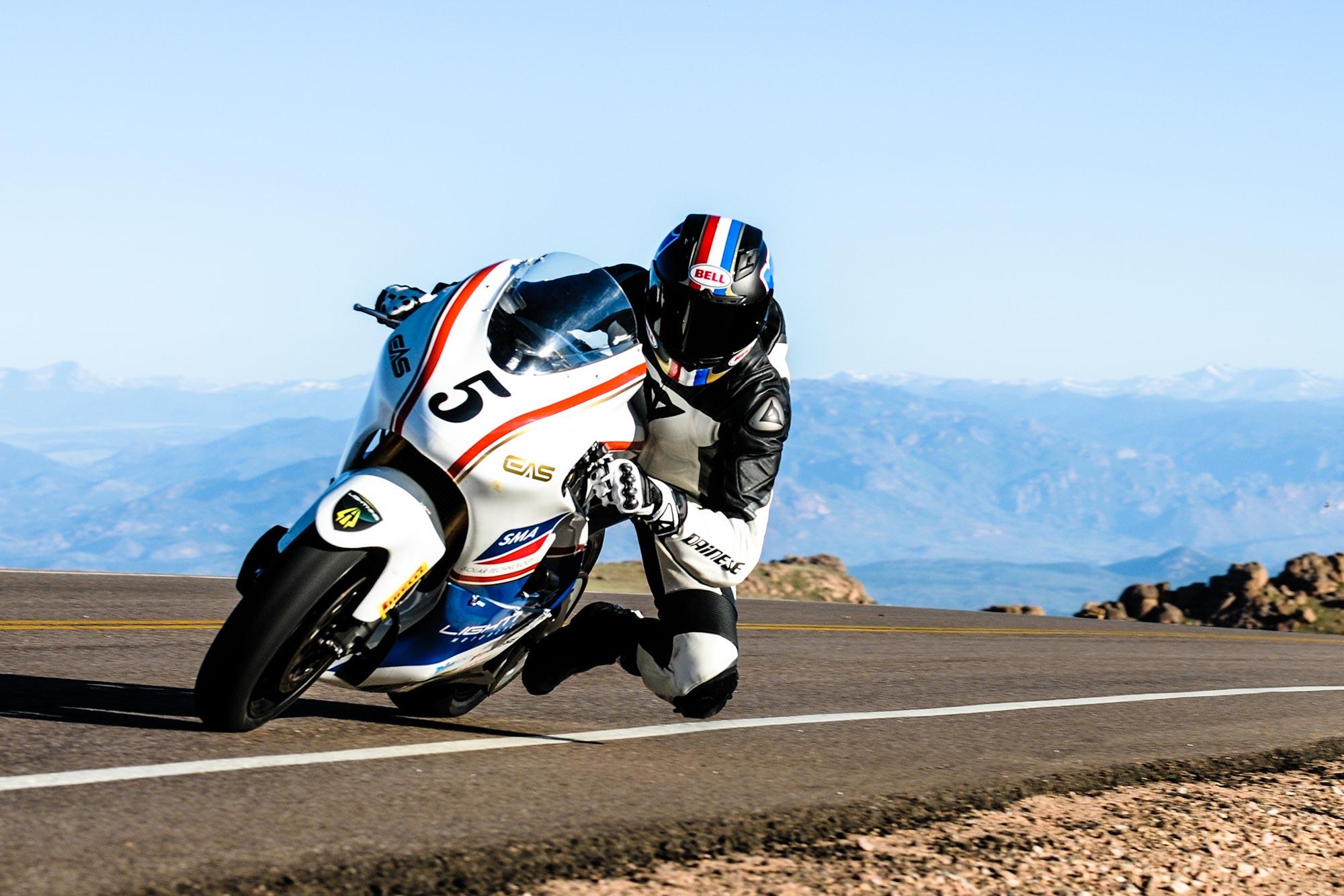
Need more evidence that electrically-powered cars and motorcycles will eventually supplant their gas-powered forebearers?
How about this: According to Ashpalt and Rubber, at this years Pikes Peak International Hill Climb in Colorado, an electrically-powered sportbike from Lightning Motorcycles (above) took home the gold for fastest motorcycle up the hill with a time just an eyelash over 10 minutes. Lightning’s bike wasn’t just the fastest electric motorcycle on the course, it was the fastest motorcycle period, besting the next bike – a no-joke gas-powered Ducati Multistrada S – by a solid 20 seconds.
And had the weather been better, it’s not a stretch to say Lightning’s entry could have grabbed the overall all-time motorcycle record of 9:52 or even given the overall record for any vehicle a run for its money. But rain-slicked pavement and even some snow at the top of the peak obviously meant Lightning rider Carlin Dunne had more interest in self-preservation than crushing more records on the truly treacherous 12.42 mile course. Good for him and congrats to the Lightning team.
While the all-time record of 8:13 for any vehicle (cars included) traversing the now fully-paved road to Pikes Peak’s 14,115-foot summit seems like a distant goal, it’s not as far off as many might think. With the instant-on torque, car-crushing acceleration rates and ever-increasing output of electric motorcycles, it won’t be long until a skilled rider on a well-set up bike riding in good conditions dispatches that record as well.
While gas-powered cars and bikes continue to thrill and fascinate owners (self included), the Pike’s Peak win by Lightning Motorcycles is yet another trophy for electric vehicles.
With the Tesla Model S dispatching gas-powered rivals in numerous straight-line races, it’s only a matter of time, maturing battery technology and figuring out charging infrastructure issues before more riders and drivers understand what real “power” is and recognize the future of racing success may measured in kilowatts and not in cubic centimeters.
Photo: © 2013 Jensen Beeler / Creative Commons – Attribution 3.0
Here’s a quick promo video for this year’s race which shows the dangers and types of vehicles that enter the race.
Here’s another video detailing a harrowing crash on the course in 2012 and how the men in the car survived.


